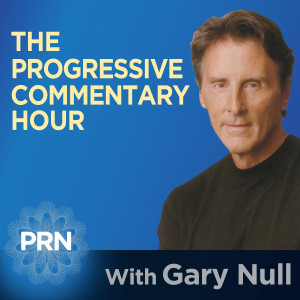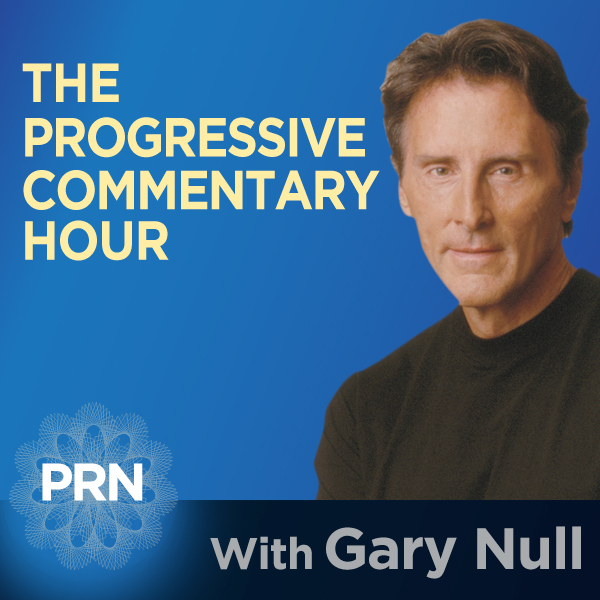Episodes

Wednesday Jul 01, 2020
The Progressive Commentary Hour - Guest Celia Farber
Wednesday Jul 01, 2020
Wednesday Jul 01, 2020

Wednesday Jun 24, 2020
Wednesday Jun 24, 2020
Dr. Alan Wallace is one of our leading voices exploring the interface between modern science, meditation, Buddhism and spirituality and Tibetan medicine. He is the founding director of the Santa Barbara Institute for Consciousness Studies that has a mission to apply rigorous scientific methodology and inquiry into contemplative practices, and teaches and lectures worldwide. While studying at the University of Gottingen in Germany, Alan left for India and was ordained by the Dalai Lama as a monk of 14 years. He holds degrees in physics and the philosophy of science at Amherst College and a doctorate in religious studies at Stanford University. He later taught at the University of California at Santa Barbara for several years. For the past 33 years, Alan has been a frequent translator and contributor for meetings between the Dalai Lama and world renowned scientists. He has written and translated over 40 books dealing with the science of mind and consciousness, Western scientific philosophy, lucid dreaming and many commentaries and translations of Tibetan Buddhist texts. Some of his research on meditation has been published in peer-reviewed scientific journals. Among some of this noteworthy publications are "Mind in the Balance: Meditation in Science, Buddhism and Christianity," "Fathoming the Mind: Inquiry and Insight in the Vajra Essence" and "Dreaming Yourself Awake." His personal website is AlanWallace.org and the Institute for Consciousness Studies is SBInstitute.com

Wednesday Jun 17, 2020
The Progressive Commentary Hour - You're Smarter Than You Think
Wednesday Jun 17, 2020
Wednesday Jun 17, 2020
Gary Null Ph.D. and the worlds leading empowerment experts show you why you are truly are smarter than you think and how to make the choices to have a truly magnificent life!
https://www.youtube.com/watch?v=4IA0Op7GZjw

Wednesday Jun 10, 2020
Wednesday Jun 10, 2020
James Corbett is the founder and editor of the Corbett Report, a website he started in 2007 to provide critical analysis on politics, culture, economics and history. He has written, recorded and hosted 1000s of hours of audio and video which has brought him to the attention of major independent media such as Russia TV. He is also the lead editorial writer for The International Forecaster. James has directed many full length and shorter documentaries and TV series. Some of the more recent ones are "The 5G Dragnet, "Secrets of Silicon Valley," "911 Whistleblowers" and "The World War 1 Conspiracy." Recently he produced a 4 part series of short documentaries entitled "Meet Bill Gates" -- the person, his career and his agendas. James website, with his numerous podcasts, audio and video programs and offerings is CorbettReport.com

Wednesday Jun 03, 2020
Wednesday Jun 03, 2020
Professor Henry Giroux (Jeer-oh) holds the Global Television Network Chair of English and Cultural Studies at McMaster University in Ontario Canada and is one of our most articulate activist scholars, thought leaders and prolific writers critiquing American politics, culture and education. He was previously the Waterbury Chair Professor at Penn State University and Director of the Forum in Education and Cultural Studies. Professor Giroux is a leader in the field of critical and public pedagogy which describes the nature of spectacle in our new media, body politic and corporate education. He is a prominent advocate of radical democracy, which opposes the powers of neoliberalism, corporatism, and religious fundamentalism that diminishes our sense of civic virtue, free-thought and well being. He has also been named among the top fifty educational thinkers of the modern Period. Henry has authored many books. His most recent is "The Terror of the Unforessen" -- that deconstructs the emergence of a popular, neoliberal fascism in our present age of disposability where personal freedoms and democracy is dispensable. Professor Giroux's website is HenryAGiroux.com

Tuesday May 26, 2020
Tuesday May 26, 2020
Dr. Michael Hudson is one of our nation’s finest and most important economists and Wall Street financial analysts. Dr. Paul Craig Robert’s recently called him “the world’s best economist.” He is currently the President of The Institution for the Study of Long-Term Economic Trends, a distinguished research professor of economics at the University of Missouri, a professor of economics at Peking University in China, and a research associate at the Levy Economics Institute at Bard College. He was the Chief Economic Policy Advisor for the Rep. Dennis Kucinich’s 2008 presidential campaign and has served as an adviser to the White House, State and Defense departments at the Hudson Institute, and the United Nations Institute. Besides his renown as an economist, Michael is also an archaeologist of ancient Near Eastern civilizations and is an editor of the International Scholars Conference on Ancient Near Eastern Economies. He has written many books and important papers and articles, including his most recent "And Forgive Them Their Debts: Lending, Foreclosure and Redemption from Bronze Age Finance to the Jubilee Year" which goes into a history of interest bearing debt beginning in earlier ancient civilizations and how solutions against predatory debt can be found in the past.His website is Michael-Hudson.com

Wednesday May 20, 2020
The Progressive Commentary Hour - Exposing the truth behind Russiagate
Wednesday May 20, 2020
Wednesday May 20, 2020
Ray McGovern served as an Army intelligence officer and a CIA analyst for 27 years under 7 presidential administrations, from John F. Kennedy to George H. W. Bush. Among his duties was preparing the President’s Daily Brief, which was a one-on-one to President Ronald Reagan’s most senior national security advisers. He was responsible for the analysis of Soviet intelligence regarding Vietnam and served as the Assistant National Intelligence Officer for Western Europe. Since retiring, Ray has been a vocal peace activist and journalist and helped create Veteran Intelligence Professionals for Sanity (VIPS) to expose the way intelligence was falsified to “justify” war on Iraq and the Sam Adams Associates for Integrity in Intelligence. He also works with Tell the Word, an ecumenical Catholic publishing house. Ray’s opinion pieces appear in many leading news sources here and abroad. He holds degrees in theology and philosophy from Fordham University, an MA in Russian History, is a graduate from Harvard Business School and has a certificate in theology from Georgetown University. His website is RayMcGovern.com and more of his writings can be found on ConsortiumNews.com

Wednesday May 13, 2020
Wednesday May 13, 2020
Danny Sheehan is one of our nation’s most important and influential Constitutional and public interest lawyers. During the past 45 years he has handled such public interest cases as the Pentagon Papers, the Watergate Break In, Iran Contra and the Silkwood murder case. He has represented victims of he Three Mile Island nuclear disaster and fought against the American Nazi Party on hate crimes. He has been a lead attorney on behalf of the Native nations at Standing Rock and handling the dismissal of a case against Chase Iron Eyes for inciting a riot and felony trespassing. Danny is the founder of the Romero Institute, a nonprofit public policy center in Santa Cruz California. And more recently he founded the New Paradigm Institute which explores new pathways to world peace. He holds a law degree and divinity degrees from Harvard University. Danny is the author of “The People’s Advocate: The Life and Legal History of America’s Most Fearless Public Defence Lawyer,” And his websites are DanielPSheehan.com AND RomeroInstitute.org

Wednesday May 06, 2020
Wednesday May 06, 2020
Richard Heinberg is A Senior Fellow at the Post Carbon Institute and is widely regarded as one of the world’s experts on our shift away from reliance on fossil fuels. His writings focus on the repercussions of a fossil fuel based world economy on food and transportation, and the need to transition away from fossil fuels and create a more sustainable future. Richard appears in the new documentary Planet of the Humans that is raising some important controversies and was featured in Leonardo DiCaprio’s film “The Eleventh Hour.” His articles appear in many media sources including Nature, YES!, Counterpunch, Oil Drum, Public Policy Review, Resilience.org and Project Censored. He has authored over ten books on oil depletion, energy economics, climate change and ecological issues. His latest book is “Our Renewable Future: Laying the Path to One Hundred Percent Clean Energy”. His websites are RichardHeinberg.com AND PostCarbon.org

Wednesday Apr 22, 2020
The Progressive Commentary Hour - Coronavirus-19: What is really going on
Wednesday Apr 22, 2020
Wednesday Apr 22, 2020
Dr Gary G. Kohls is a retired family practitioner, who specialized in holistic (non-drug) and preventive mental health care for the last decade of his career. He has expertise in the areas of traumatic stress disorders, brain malnutrition, non-pharmaceutical approaches to mental ill health, neurotransmitter disorders and the neurotoxicities from psychotropic drugs, vaccines, environmental toxins and food additives. He worked with previously psychologically traumatized, usually malnourished, sometimes seriously neglected (in childhood), and over-drugged patients who had then suffered the ignominy of being falsely labeled “mentally ill. Since his retirement, Dr Kohls has written a weekly column for the Duluth Reader, an alternative newsweekly magazine published in Minnesota. He is a past member of the International Center for the Study of Psychology and Psychiatry, Mind Freedom International and the International Society for Traumatic Stress Studies. His weekly Duty to Warn columns appear on his website and archived at DuluthReader.com/articles/categories/200_Duty_to_Warn.

